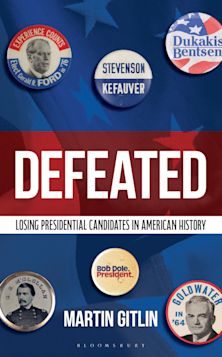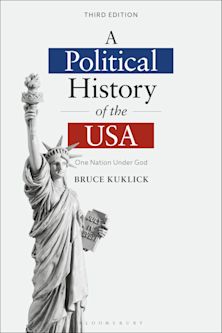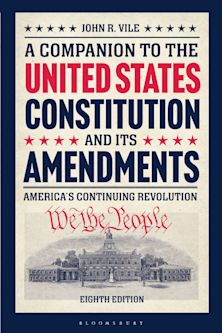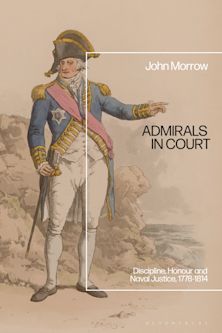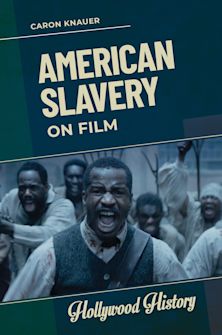- Home
- ACADEMIC
- History
- United States History
- The Eisenhower Presidency
The Eisenhower Presidency
Lessons for the Twenty-First Century
Andrew J. Polsky (Author) , Meena Bose (Contributor) , Kenneth E. Collier (Contributor) , Dale R. Herspring (Contributor) , Geoffrey Kabaservice (Contributor) , Douglas Little (Contributor) , Adam McMahon (Contributor) , David A. Nichols (Contributor) , Andrew J. Polsky (Contributor) , Mark Shanahan (Contributor) , Zuoyue Wang (Contributor) , M. Stephen Weatherford (Contributor) , Jonathan Fanton (Foreword) , Dan Sharp (Foreword)
The Eisenhower Presidency
Lessons for the Twenty-First Century
Andrew J. Polsky (Author) , Meena Bose (Contributor) , Kenneth E. Collier (Contributor) , Dale R. Herspring (Contributor) , Geoffrey Kabaservice (Contributor) , Douglas Little (Contributor) , Adam McMahon (Contributor) , David A. Nichols (Contributor) , Andrew J. Polsky (Contributor) , Mark Shanahan (Contributor) , Zuoyue Wang (Contributor) , M. Stephen Weatherford (Contributor) , Jonathan Fanton (Foreword) , Dan Sharp (Foreword)
You must sign in to add this item to your wishlist. Please sign in or create an account
Description
We are in the midst of a Dwight Eisenhower revival. Today pundits often look to Eisenhower as a model of how a president can govern across party lines and protect American interests globally without resorting too quickly to the use of force. Yet this mix of nostalgia and frustration with the current polarized state of American politics may mislead us. Eisenhower’s presidency has much to teach us today about how a president might avert crises and showdowns at home or abroad. But he governed under conditions so strikingly different from those a chief executive faces in the early 21st century that we need to question how much of his style could work in our own era.
The chapters in this volume address the lessons we can draw from the Eisenhower experience for presidential leadership today. Although most of the authors find much to admire in the Eisenhower record, they express varying opinions on how applicable his approach would be for our own time. On one side, they appreciate his limited faith in the power of his words to move public opinion and his reluctance to turn to the use of force to solve international problems. On the other side, it was plain that Ike’s exercise of “hidden-hand” leadership (in Fred Greenstein’s evocative term) would not be possible in the modern media environment that makes Washington a giant fishbowl and instant revelation an acceptable norm. Both Eisenhower admirers and skeptics (and many of the authors are both) will find much in these essays to reinforce their preconceptions—and much that is unsettling. Eisenhower emerges as an effective but flawed leader. He was in many ways the right man for his time, but limited because he was also a man of his time.
Table of Contents
Chapter One: Reassessing and Reviving Eisenhower’s Governing Style Kenneth E. Collier
Chapter Two: Leading as a True Conservative: Eisenhower, the GOP, and the Politics of Fiscal Responsibility Geoffrey Kabaservice
Chapter Three: Closing Argument: The Verdict on Ike and Civil Rights David A. Nichols
Chapter Four: The Eisenhower Transition: The Economics and Politics of Economic Policy
M. Stephen Weatherford
Chapter Five: Pursuing the Parallel Track Mark Shanahan
Chapter Six: Sputnik Moments: Science and Technology Policy from Eisenhower to Obama Zuoyue Wang
Chapter Seven: Eisenhower’s “Strategic Hand”: Developing and Executing a Foreign Policy Vision Meena Bose
Chapter Eight: We’re Not in Kansas Anymore: Eisenhower and U.S. Foreign Policy in the Middle East, 1953-1961 Douglas Little
Chapter Nine: Eisenhower and the Military Dale R. Herspring
Chapter Ten: Peace Dividends: Eisenhower and the Unbuilding of the American National Security State Adam McMahon and Andrew J. Polsky
Conclusion: Shifting Currents: Dwight Eisenhower and the Dynamic of Presidential Opportunity Structure Andrew J. Polsky
Product details
| Published | 30 Nov 2015 |
|---|---|
| Format | Ebook (Epub & Mobi) |
| Edition | 1st |
| Extent | 306 |
| ISBN | 9781498522212 |
| Imprint | Lexington Books |
| Illustrations | 10 BW Photos, 5 Graphs, 1 Table |
| Publisher | Bloomsbury Publishing |
About the contributors
Reviews
-
On leaving office, Dwight Eisenhower’s ranking as president was fairly low. Over time, his reputation has risen to the point that he is now regarded as one of the top ten presidents in US history. This collection of essays asks, 'What lessons can we learn from Ike’s example as a leader?' Editor Polsky's introduction acknowledges that 'to appropriate the past for use in the present is … an inherently problematic enterprise,' yet the authors of these essays believe there is much to learn from Ike’s example. Eisenhower viewed leadership as 'the ability to decide what is to be done, and then to get others to want to do it.' The essays cover a great deal of territory, including the nature of Ike’s conservatism, dealings with Congress, party leadership, and civil rights (which David A. Nichols maintains is a stronger record than has been acknowledged). Perhaps the strongest essay is Polsky’s conclusion reexamining the importance of political opportunity to leadership. A valuable and useful addition to the literature on the Eisenhower presidency that challenges some of the accepted wisdom about Eisenhower’s leadership. Summing Up: Highly recommended. Upper-division undergraduates and above.
Choice Reviews
-
The Eisenhower Presidency is a valuable contribution to the literature on Eisenhower and on the presidency more generally. I recommend it wholeheartedly.
Fred I. Greenstein, Princeton University
-
In my opinion, Dr. Andrew Polsky’s The Eisenhower Presidency: Lessons for the Twenty-First Century is the best and most important anthology of essays about the Eisenhower Presidency ever put together. The book consists of papers written by prominent presidential scholars and historians that were presented at a conference on the Eisenhower era at Hunter College in March, 2013. The book brightly illuminates major issues of Eisenhower’s presidency that remain pertinent today. To name a few, it covers the problem of civil rights in the 1950s, space and technology questions that developed in the 1950s, questions about Eisenhower’s innovative presidential style, the rise of conservatism as a political force in the late 50s, and a range of domestic and foreign policy topics including the Middle East. I have looked forward to a book like this on the Eisenhower presidency for a long time. I could not recommend The Eisenhower Presidency more highly.
David Eisenhower, University of Pennsylvania














